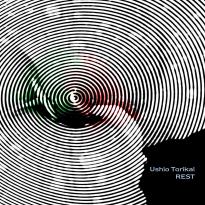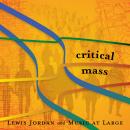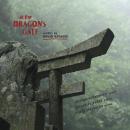Rest
Rest
Tokyo, Japan
| RestiTunes Artist's PageiTunes Album Page | |||
|---|---|---|---|
| Song Title | Time | Price | |
| 1. | Gathered / Scatter | 08:43 | $0.99 |
| 2. | Bashulli Poco | 11:06 | |
| 3. | Ever | 11:50 | |
| 4. | Voiced One | 11:30 | |
| 5. | Rest | 08:46 | $0.99 |
Rest: Don’t let the title fool you. This is edgy, abrasive modernism at its finest that would test any tranquilizer; five feisty chamber works from one atypical Japanese American composer. There are many revelations here, not the least of which is Torikai herself who outspokenly defies the traditional stereotype of quiet Japanese female. Well-known in Japan for her idiosyncratic mixture of ancient Japanese culture, electronics, and concert music, she has operated under the radar in the USA since the 1980s when she became a prominent figure in the New York Downtown scene.
The small acoustic ensemble works on this CD – her first US release after several on Japanese labels – have all been composed since her arrival. “I moved physically from Downtown to Uptown,” she says, “but I am neither a musical ‘Downtowner’ nor ‘Uptowner’, I’m just being myself." The no-slouch performers are equal to the daunting physical and expressive tasks at hand: Aki Takahashi, Renée Jolles, Thomas Buckner, Joseph Kubera, and Continuum. The final track, Rest, was written for the Tokyo Philharmonic Chorus while the events of September 11, 2001 were taking place. Set to a poem of Christina Georgina Rossetti it encapsulates Ushio Torikai’s sentiments against violence and brings the album, with its intensities of physicality and emotion, to a fitting conclusion.
Ushio Torikai started a concert series of her own music in Tokyo in 1979, and was invited to the Paris Biennale in 1982. Concerts of her music have since been presented in major cities in Europe, North America and Japan, including at Georges Pompidou Center (Paris), the Museum of Modern Art (San Francisco), and Walker Art Center (Minneapolis). Her compositions vary considerably in instrumentation, ranging from Western orchestral instruments to traditional Japanese ones; computer/electronics to reconstructed ancient Asian instruments; and Western Choir to Japanese Buddhist monks’ chants. Ms. Torikai has received commissions from Ensemble Modern (Frankfurt), the Modern Art Sextet Berlin, the Kronos Quartet, Continuum (New York), the Canadian Electronic Ensemble, the City of Los Angeles, the Japan Broadcasting Corporation, and Japan National Theater, to name only a few. Commissioned pieces range from works for concert music and opera to a permanent music installation in a public park. She divides her time between New York City and Tokyo.
It's all in the first piece, Gathered/Scatter, an intensely physical piano work for Aki Takahashi which establishes a relationship between the performer's body and the rhythms of the piece and then scatters the results like wheat seed. Ushio Torikai uses similar ideas. Bashuli Poco for clarinet, violin, cello (played by member of Continuum) treats the instruments as separate entities rather than an ensemble, but the parallelism of lines yields something richer than mere counterpoint or interactivity. Ever was written for critic Kaniharu Akiyama, who brough Toru Takemitsu to wider notice, and it too deals with gathering and dissemination, but this time by a solo violin voice. The set also includes a beautiful vocal piece for baritone Thomas Buckner, which draws intimately from Japanese folk forms, and ends with the title piece, unusual for her work in using a tonal setting for text rather than phonemes, and is another piece inspired by 9/11. Another very different threnody, using the voices of Buddhist monks, was released a few years ago. She's highly concentrated in/on language, with a freedom of gesture which sometimes seems to accord with conventional notions of Japanese aesthetics, but more often runs flatly counter to them.
- The Wire



